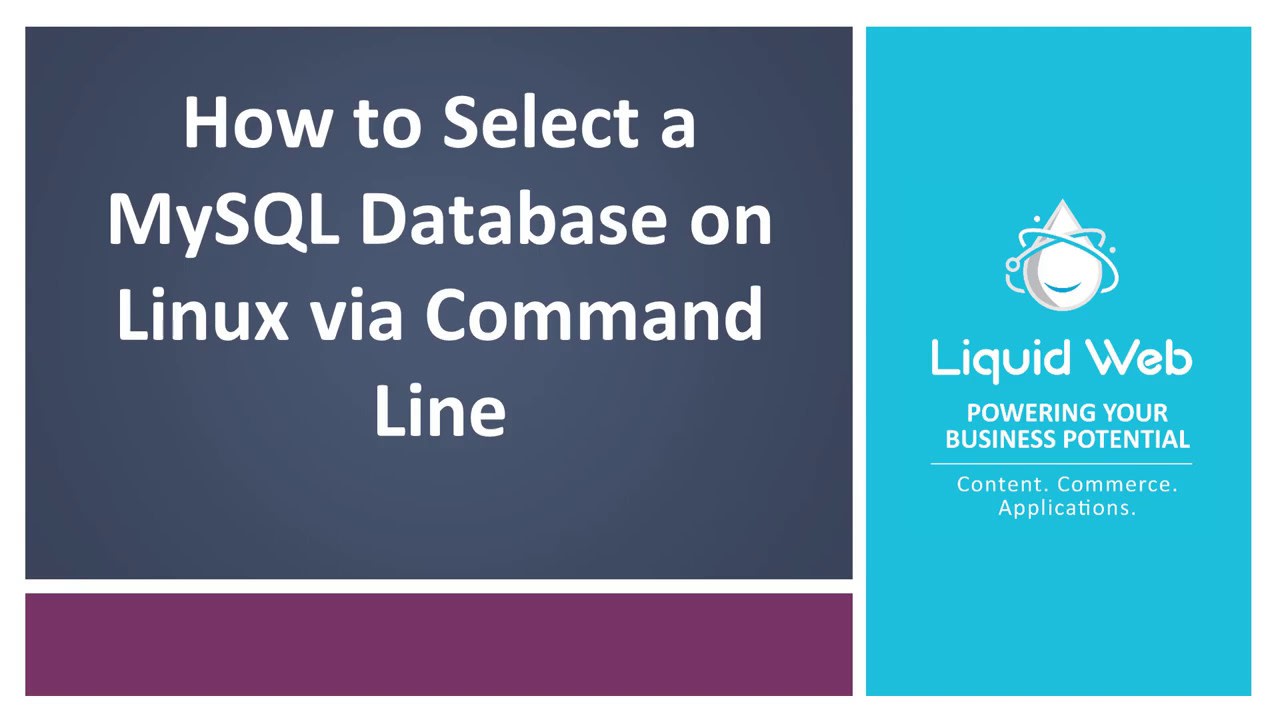Tag: MySQL
Check our vast MySQL tutorials, we have how to's that range from the basics, from setting up a user to advance topics like how to index your database.
Renaming Database Tables with PhpMyAdmin
Renaming a table within a database is a task that may need to be done occasionally. You might just need to rename it for clarification purposes, to archive old data, to make a copy when a restore is being done, or any number of other reasons. PhpMyAdmin helps you rename a database quickly with just a few clicks.
Grant Permissions to a MySQL User on Linux via Command Line
MySQL via Command Line 101: Basic Database Interaction
Preflight Check
- These instructions are intended for granting a MySQL user permissions on Linux via the command line
- I’ll be working from a Liquid Web Core Managed CentOS 6.5 server, and I'll be logged in as root.

Login to MySQL
First we'll log in to the MySQL server from the command line with the following command:
Exporting Databases and Tables with PhpMyAdmin
Using PhpMyAdmin to export a database or table is a great way to make a backup you can save locally, or it can help you with transferring that information to another server quickly. A few simple steps can be a powerful tool to help you and your business. We will go over exporting all databases at once, a single database, and exporting a single table. This guide assumes that you have already logged in to PhpMyAdmin.
Importing Databases and Tables with PhpMyAdmin
Using PhpMyAdmin to import databases can help us in a few different situations, like when moving a database from one server to another, updating a table that is being developed elsewhere, or even restoring content from a backup. PhpMyAdmin helps make all those processes easy to accomplish through our browser.
Creating Database Tables with phpMyAdmin
Creating a table and remembering what all details need to go in it can be tricky if you are manually running commands to get it set up. phpMyAdmin can help with setting up the structure for the tables and makes the whole process quick and easy. This guide assumes that you have already logged in to PhpMyAdmin. Now let’s explore how to run SQL queries on a database.
Using PhpMyAdmin to search for records and information in your database can quickly help you get the information you need without having to run advanced search queries. This tutorial assumes you have already logged in to PhpMyAdmin, and shows how to search by keyword and for a range of records.
Running SQL Queries on a Database with PhpMyAdmin
In this tutorial, we will explore how to run SQL queries on a database within PhpMyAdmin. SQL stands for Structured Query Language. SQL statements or queries are used to perform database tasks such as searching, updating, or retrieving data from a database.
Becoming Familiar with Databases in PhpMyAdmin
This tutorial assumes you’ve already logged in to PhpMyAdmin. Now let’s familiarize ourselves with databases and PhpMyAdmin.
Installing WordPress using WP-CLI
WordPress has a great GUI-based installation process however some use cases call for CLI! Or, maybe you just feel more at home in a terminal, either way this article will show you how to get your WordPress site setup with just a terminal, using WP-CLI, and maybe a sprinkle of SSH.
Select a MySQL Database on Linux via Command Line
Pre-Flight Check
- These instructions are intended for selecting a MySQL database on Linux via the command line.
- I’ll be working from a Liquid Web Core Managed CentOS 6.5 server, and I'll be logged in as root.

First we'll login to the MySQL server from the command line with the following command:
Our Sales and Support teams are available 24 hours by phone or e-mail to assist.

